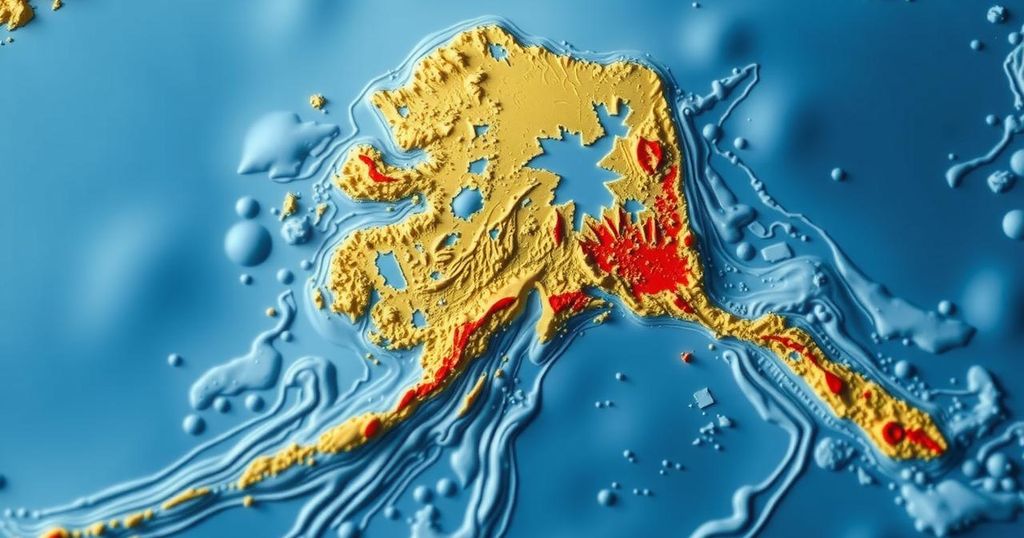On November 25, 2024, a magnitude 1.2 earthquake occurred 28 miles east of Sutton, Alaska, at a depth of 11.3 miles. It highlights the seismic activity of Southern Alaska driven by tectonic interactions among the Pacific and North American plates, featuring notable historical and recent earthquakes.
On November 25, 2024, a magnitude 1.2 earthquake occurred approximately 28 miles east of Sutton, Alaska, at 03:08:30 AKST (12:08:30 UTC). The quake was recorded at a depth of 11.3 miles (18 km) and has not yet undergone review by a seismologist. The seismic event is spatially located 36 miles east of Palmer and approximately 69 miles northeast of Anchorage. These data points illustrate the geographical context of the quake within the Southern Alaska region’s tectonic framework.
The tectonic setting of Southern Alaska is characterized by several significant earthquake-generating features. Prime among these is the megathrust fault marking the boundary between the subducting Pacific Plate and the overriding North American Plate, responsible for the Great Alaska Earthquake of 1964, the second largest earthquake recorded globally. Intermediate-depth seismicity is found in the Wadati-Benioff Zone, where the pacific Plate descends beneath the North American Plate, affecting the seismic landscape from Alaska’s Aleutian Arc to the Alaska Range, seen in events like the 2016 M7.1 Iniskin earthquake.
Crustal seismicity, another important aspect of the region’s geology, arises from notable structures such as the Castle Mountain Fault and the geological formations in the Cook Inlet basin. These sources are capable of generating significant earthquakes, as seen in the April 1933 M6.9 event that caused damage in Anchorage and the 1984 M5.6 Sutton Earthquake generated by the Castle Mountain Fault. The diffuse seismicity between Cook Inlet and the Denali Fault indicates a complex zone of thrust faults which can lead to substantial seismic activity.
The rich geological history of these tectonic features underscores the need for continued monitoring and research in Seismology to mitigate risks associated with seismic events. Understanding these structures is essential, as Alaska’s seismic landscape significantly influences both geological study and community preparedness.
The earthquake event of magnitude 1.2 near Sutton, Alaska, is a part of the broader tectonic dynamics that characterize Southcentral Alaska. This region is known for its seismic activity, primarily caused by the interaction of the Pacific and North American tectonic plates. Major and intermediate depth earthquakes result from processes occurring in the megathrust fault and the Wadati-Benioff zone, impacting local geography and infrastructure. The region also experiences crustal seismic activity linked to geological structures such as the Cook Inlet basin and the Castle Mountain Fault, which have historically produced significant earthquakes.
In summary, the magnitude 1.2 earthquake near Sutton, Alaska, is indicative of the ongoing seismic activity in Southcentral Alaska, characterized by the interaction of different tectonic features. The research highlights the significance of both megathrust and intermediate-depth seismicity alongside crustal movements in contributing to the region’s earthquake risk. The implications of such seismic events underline the critical importance of monitoring seismic activity in Alaska to enhance public safety and infrastructure resilience.
Original Source: earthquake.alaska.edu






